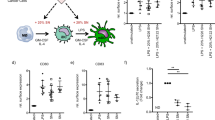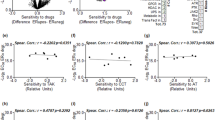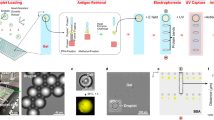Abstract
Elk-1, an ets related gene codes for at least two splice variants Elk-1, which regulates c-fos transcription and ΔElk-1, both of which function as transcriptional activators. To investigate the role of Elk-1 and ΔElk-1 proteins in apoptosis; we have developed rat fibroblast cell lines and human breast cancer cell lines expressing Elk-1 and ΔElk-1. The expression of Elk-1 and ΔElk-1 proteins in the Elk-1/ΔElk-1 transfectants were analysed by immunofluorescence, immunohistochemistry, and Western blot analysis. The Elk-1 unlike ΔElk-1 transfectants showed a shortened and flattened morphology compared to the parental cells. We have found that calcium ionophore treatment of Rat-1 Elk-1, MCF-7 Elk-1, Rat-1 ΔElk-1 and MCF-7 ΔElk-1 transfectants resulted in programmed cell death. These results indicate that constitutive expression of Elk-1 and ΔElk-1 proteins triggers apoptosis in Rat-1 fibroblasts and breast cancer cells when treated with calcium ionophore.
This is a preview of subscription content, access via your institution
Access options
Subscribe to this journal
Receive 50 print issues and online access
$259.00 per year
only $5.18 per issue
Buy this article
- Purchase on SpringerLink
- Instant access to full article PDF
Prices may be subject to local taxes which are calculated during checkout
Similar content being viewed by others
Author information
Authors and Affiliations
Rights and permissions
About this article
Cite this article
Shao, N., Chai, Y., Cui, Jq. et al. Induction of apoptosis by Elk-1 and ΔElk-1 proteins. Oncogene 17, 527–532 (1998). https://doi.org/10.1038/sj.onc.1201931
Received:
Revised:
Accepted:
Published:
Issue date:
DOI: https://doi.org/10.1038/sj.onc.1201931
Keywords
This article is cited by
-
Concomitant activation of ETS-like transcription factor-1 and Death Receptor-5 via extracellular signal-regulated kinase in withaferin A-mediated inhibition of hepatocarcinogenesis in mice
Scientific Reports (2017)
-
Increased Phosphorylation of Ets-like Transcription Factor-1 in Neurons of Hypoxic Preconditioned Mice
Neurochemical Research (2009)
-
c-Fos oncogene regulator Elk-1 interacts with BRCA1 splice variants BRCA1a/1b and enhances BRCA1a/1b-mediated growth suppression in breast cancer cells
Oncogene (2001)
-
Altered Ets transcription factor activity in prostate tumor cells inhibits anchorage-independent growth, survival, and invasiveness
Oncogene (2000)
-
The Ets-transcription factor family in embryonic development: lessons from the amphibian and bird
Oncogene (2000)



